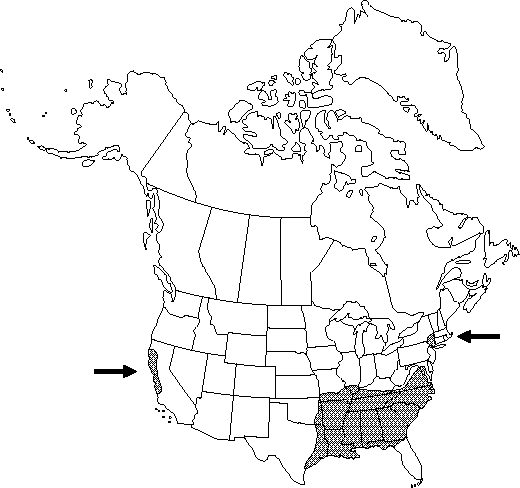Ranunculus parviflorus
Sp. Pl. ed. 2, 1: 780. 1762.
Stems erect or nearly erect, hispid. Basal and lower cauline leaf-blades semicircular or reniform, 3-parted or divided, 1.5-3.2 × 1-2.4 cm, again lobed, base cordate, margins dentate, apex rounded. Flowers pedicellate; receptacle glabrous; sepals 5, reflexed, 1.5-2 × 0.8-1.2 mm, densely pubescent; petals 0-5, 1.1-1.8 × 0.2-0.7 mm. Heads of achenes globose, 3-5 × 3-5 mm; achenes 10-20 per head, 1.7-2 × 1.4-1.7 mm, faces papillose, each papilla crowned with hooked bristle, otherwise glabrous, margin smooth; beak deltate with slender recurved tip, 0.4-0.6 mm.
Phenology: Flowering spring–summer (Mar–Jul).
Habitat: Roadsides, fields, and woods
Elevation: 50-200 m
Distribution

Introduced; Ala., Ark., Calif., Fla., Ga., Ill., Ky., La., Md., Miss., Mo., N.J., N.Y., N.C., Okla., S.C., Tenn., Tex., Va., native to Europe, Pacific Islands, Australia
Discussion
Selected References
None.